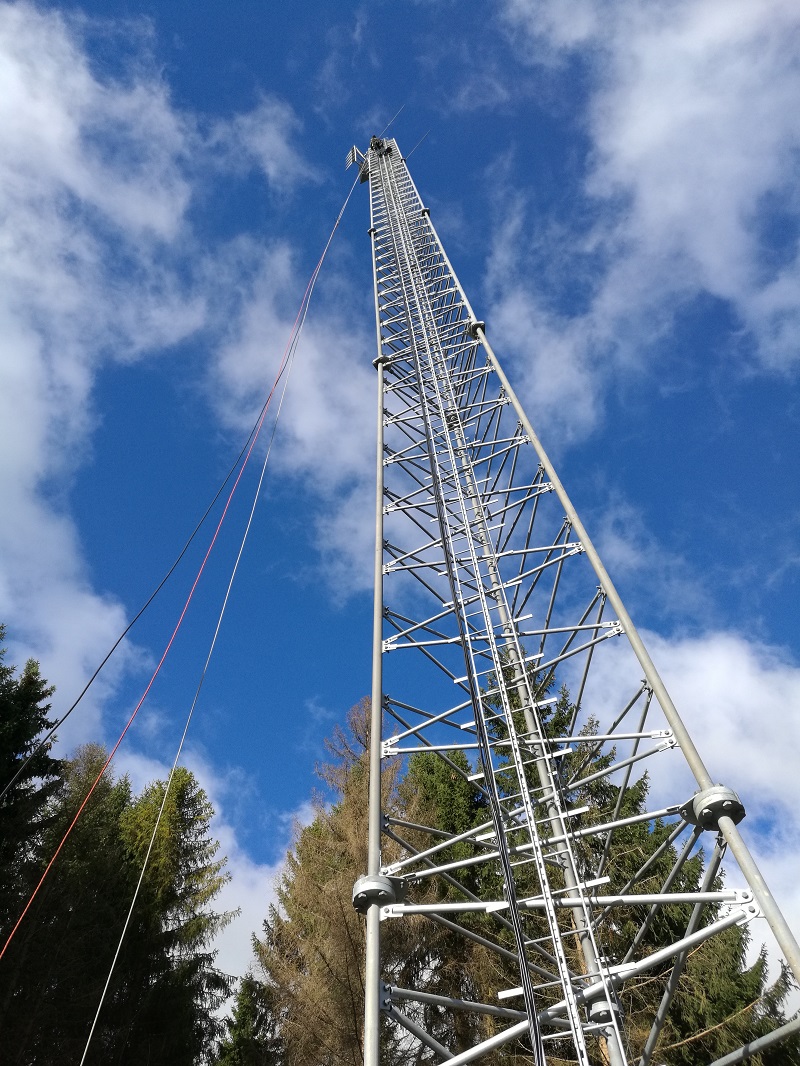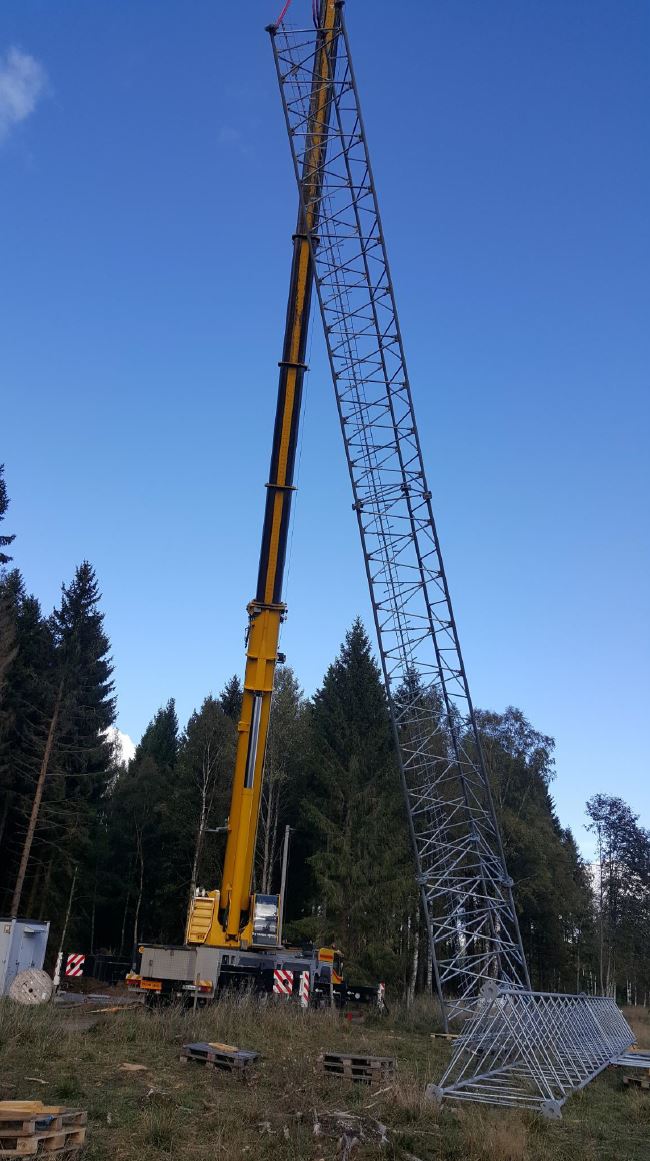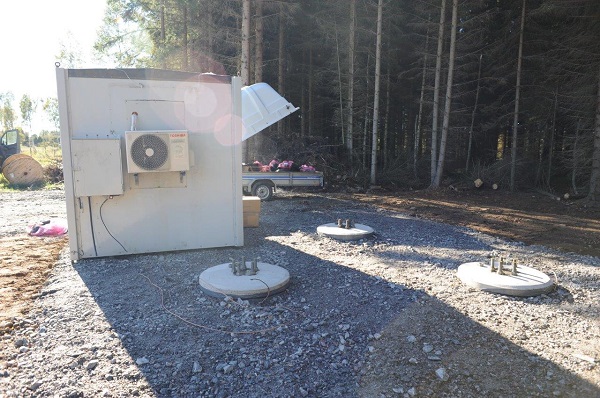Submitted by monteith on Tue, 11/05/2019 - 08:58
Six sap flow sensors have been installed in the observed forest. The sensors give measurements of the rate at which moisture is transported up or down the stem. This gives an indication of when changes in water content in the tree can be expected, as well as how the tree responds to its environment.
A sap flow sensor produces a pulse of heat in a probe insterted in the stem. Temperature probes then monitor the change in heat up or down the stem, from which the flow rate of moisture in the tree can be inferred.
Submitted by monteith on Fri, 09/27/2019 - 12:04
Dendrometers measure stem radius variations at sub-micrometre resolution. These variations occur as the trees lose water during transpiration and suck up water from the soil through their roots at different times of the day in response to sunlight, temperature, soil moisture, wind and rain. State-of-the-art dual-point dendrometers from Natkon were installed. The dendrometers consist of two linear potentiometers, mounted on an 8 mm-thick carbon fibre reinforced polymer chassis to accurately measure radial variation in both the bark and sapwood of the trees.
Submitted by monteith on Fri, 08/18/2017 - 08:22
The last component of BorealScat’s radar system has been installed and long-term time series measurements have been initiated. This includes an additional, smaller antenna array consisting of 10 dual-polarised (H and V) antennas, allowing fully polarimetric tomographic profiles of the forest below at C-band (5200-5600 MHz). The measurements from this system will help to improve our understanding of electromagnetic scattering mechanisms in boreal forests at C-band and their variation with environmental parameters. This work is funded by the European Space Agency (ESA).
Submitted by monteith on Tue, 11/15/2016 - 07:46
One of the primary goals of the project is to study the variation of forest radar signatures in different environmental conditions. This is necessary since boreal forests are subject to highly dynamic (and sometimes extreme) weather conditions, affecting synthetic aperture radar images taken from satellites. Examples are wind-blown trees causing Doppler shifts in the reflected radar signals and wet soil causing strong reflections of signals off the ground.
Submitted by monteith on Tue, 10/11/2016 - 07:09
The tower has finally been fully erected and the antenna array has been raised to its place at the top.
While this is a significant milestone in the project, there is still much to do before measurements begin.
During the upcoming week, the feeder cables to the antennas will be routed and the weather station will be installed.

Submitted by monteith on Fri, 10/07/2016 - 13:30
The tower lower section of the tower has been erected. This was done using a mobile crane, capable of lifting up to 200 tons.

Image credits: Mast- och tornunderhåll (www.mtuh.se).
Each bolt on the foundation had to be set with high accuracy such that the tower resting on it does not lean to one side.
Submitted by monteith on Thu, 10/06/2016 - 07:40
The antenna array, which will be placed at the top of the tower, has now been completely assembled. The array was designed to withstand the extreme environmental conditions of a Swedish winter. The metallic antenna elements are covered by a weather-resistant radome which will avoid rain from shorting out the elements and rendering measurements useless. The metallic array frame is very strong and heavy, which will minimize vibrations due to strong winds.
Submitted by monteith on Mon, 10/03/2016 - 20:26
After a long wait for the concrete foundation to dry the tower was delivered in three parts: a lower section, upper section and the frame for the antenna array.

The equipment hut for housing the measurement instruments beside the completed foundation.
Submitted by monteith on Wed, 09/14/2016 - 07:13
After months of planning and paperwork, the BorealScat tower construction is finally underway. After a few trees were cleared, the first stage in the construction will be the concrete foundation for the tower. Unfortunately the groundwater level in the area is very shallow, so a concrete foundation will be constructed that is larger that what is typically used for a tower of this size.